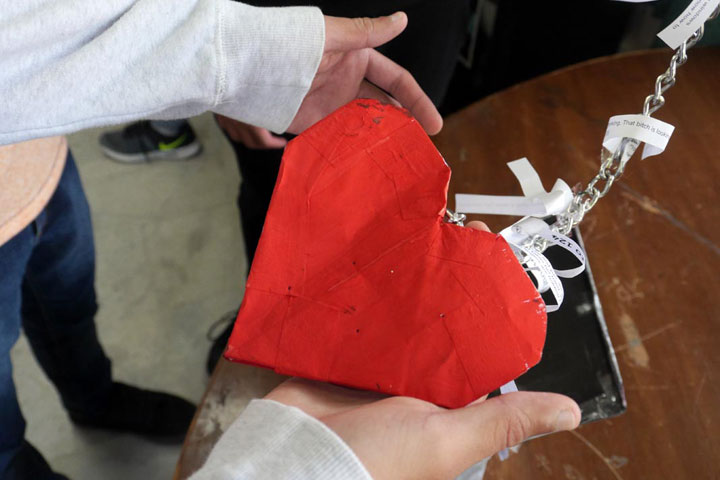
05 Oct The art of literature
Grade 12 English students have been exploring a modern American literary classic, and expressing the challenging themes within through creative mediums including visual art.
Students in Ms Dyson’s English 12 class read Toni Morrison’s Beloved (winner of the the Pulitzer Prize for Fiction and the Nobel Prize in Literature), which portrays the history of slavery and racial oppression in the United States. Morrison’s compelling and challenging novel asks students to step into the shoes of characters whose lives are vastly different from their own and to imagine the emotional and psychological impact of a life marked by abuse and discrimination. Students supplemented their study of the novel by exploring primary texts in the form of slave narratives, learning how firmly the novel’s events are grounded in historical facts.
As they read and discussed the novel, students explored two essential questions. Firstly, how do past experiences shape a person’s future? What factors enable a person to be resilient in the face of suffering? And secondly, how can the literary elements of a novel contribute to our understanding of the novel’s thematic elements?
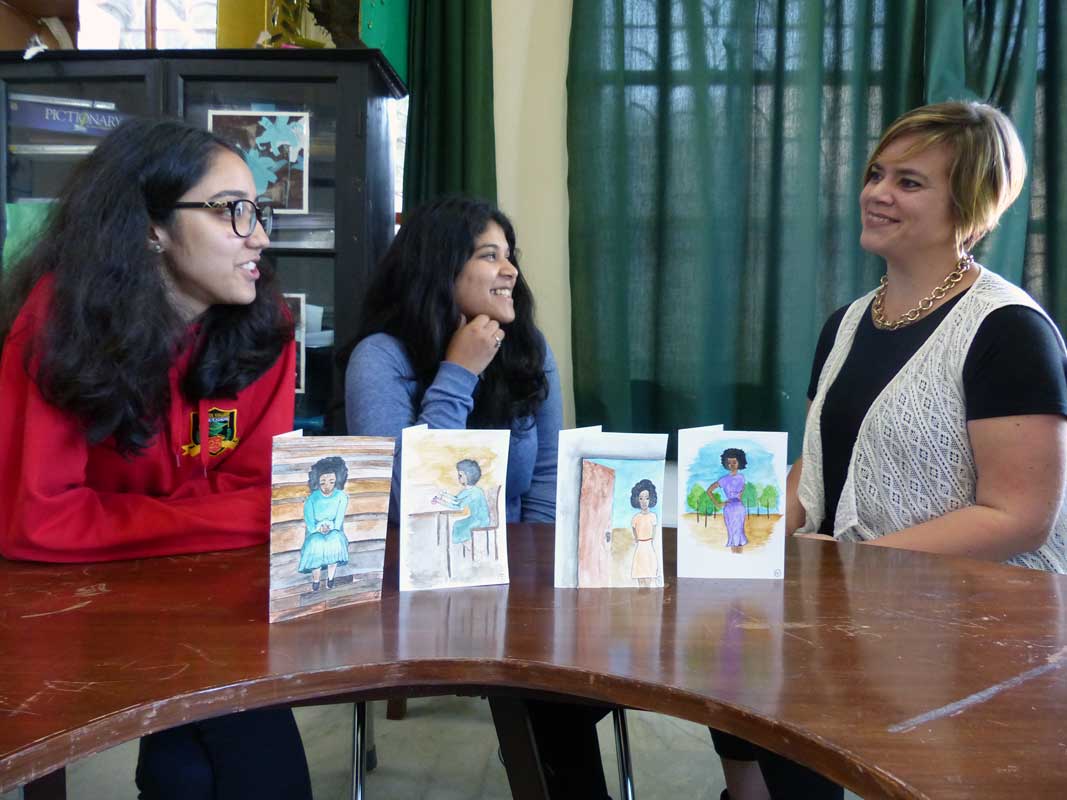
The culminating project enabled students to demonstrate their understanding of Morrison’s themes and these essential questions by creating a piece of art work that explored one character’s development over the course of the novel. The art work was rooted in a close reading of selected key passages from the text. Just as the complex narrative structure of Morrison’s novel enables readers to empathise with the uncertainty of an enslaved person’s life, the student’s art work had to express the character’s journey in form as well as in content. This type of creative project enables students to engage with the text on a deep level and to respond to literature as a work of art (in addition to conducting a more traditional literary analysis). The process of creating the piece was as important as the final results, and students created a variety of work ranging from writing and performing original songs to creating a 3D animation inspired by the novel’s use of tree imagery.
Scroll down for the students’ artwork and explanation of their work.
Please note, some of the explanations reflect the novel’s challenging themes and include spoilers about its plot.
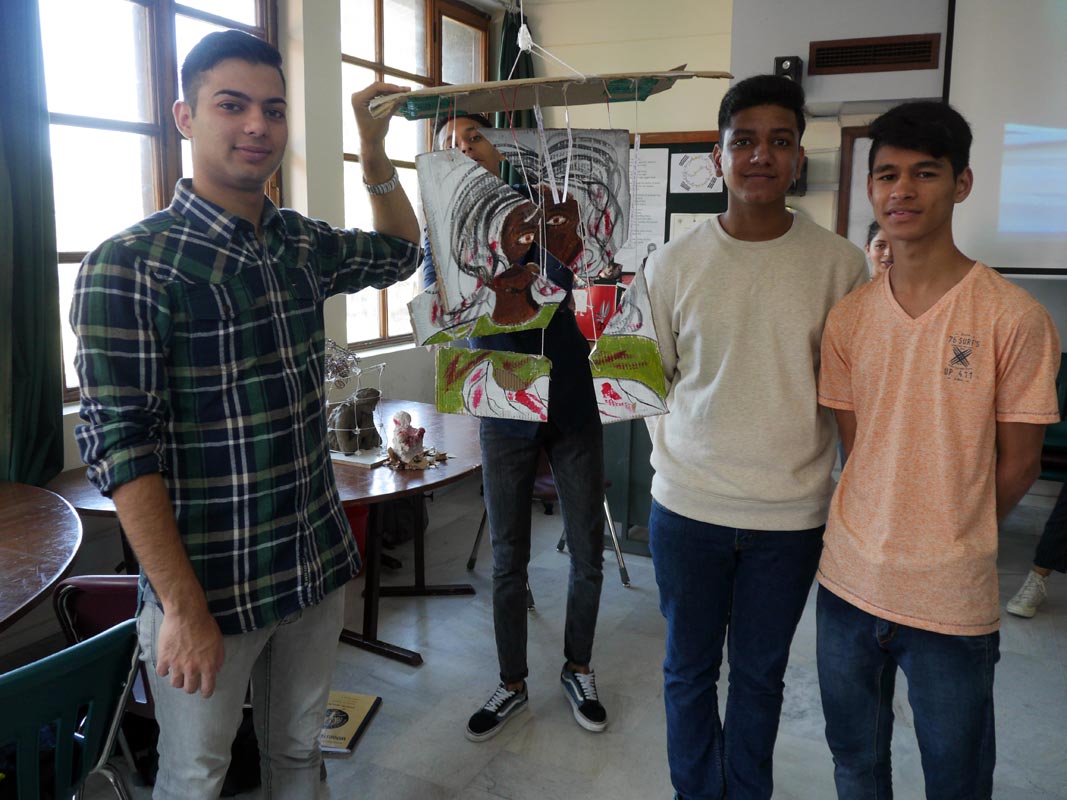
Varun, Vatsal, Abhishek and Bagh
“We chose this format because we thought that it’s complicated and multidimensional, just like Sethe’s character. Much of our analysis is based upon the two sides of Sethe’s character- one of a loving mother and one of a mother who killed her own child. One side of our project portrays Sethe as a loving mother who has Denver wrapped in her arms, while the other side shows Sethe as a murderer. There are some subtle details in our project, like the red element on one side, which symbolises Beloved’s blood. Our project also portrays the fact that most people in the book only see one side of Sethe’s character, just like you can only see one side of our project at one time. Our project is simple… but does a good job of making its point.”
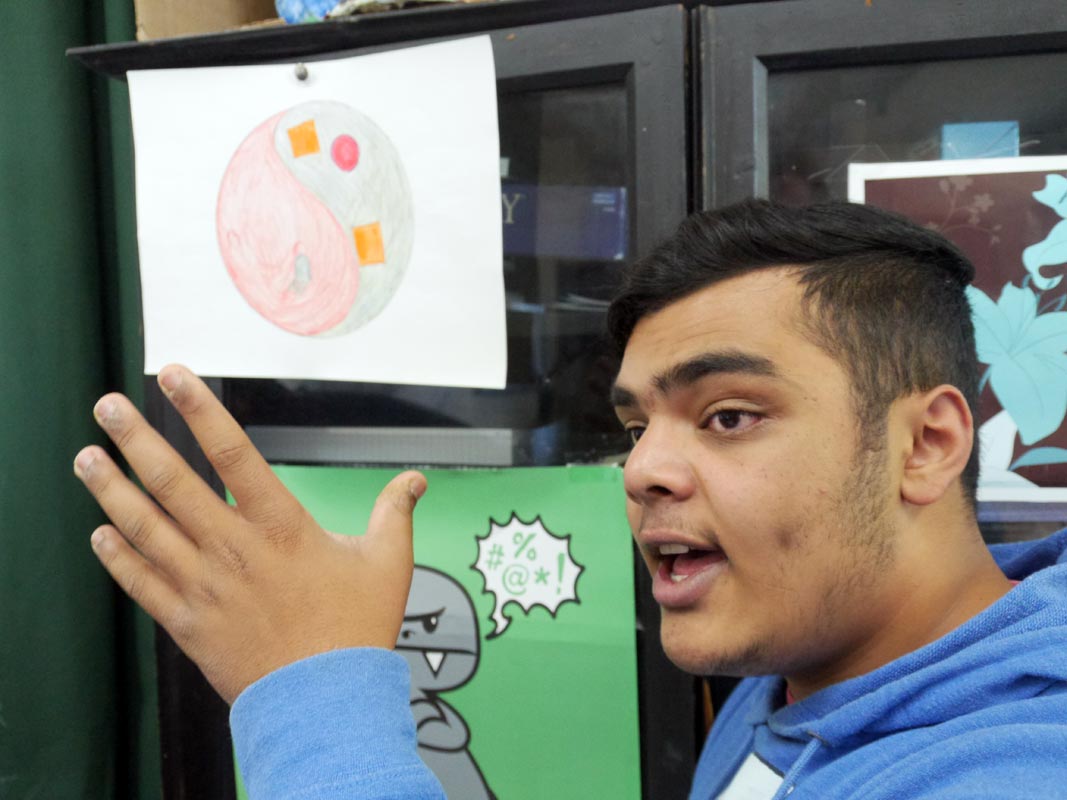
Jayant
In Jayant’s picture The yin and yang represent the two sides of Seth’s characters – the independent verses the dependent. The colours represent different characters and how they affect Sethe.
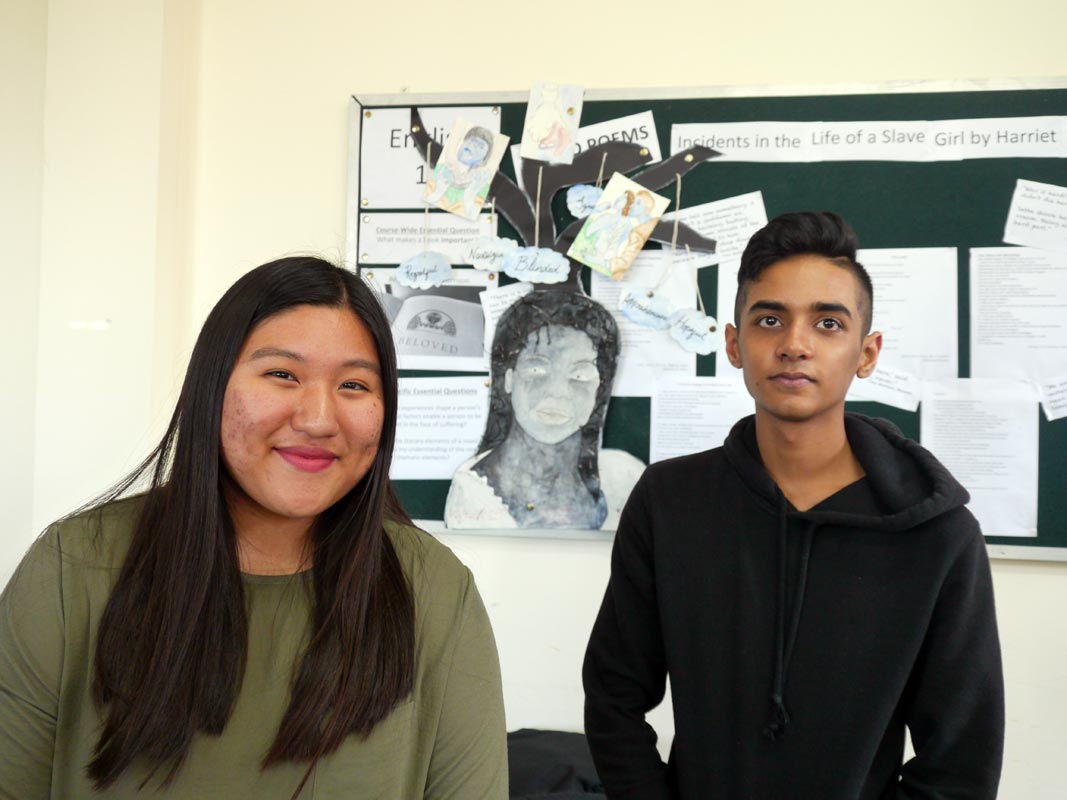
Kelzang, Kavi, and Passawit
“The format we chose was to make Sethe our main character, putting her in the middle of the project. Around Sethe are her past, present and future. We chose to show how Sethe has developed as a character psychologically and emotionally through using the different stages of her life. Her past haunts her even in the present and future and is recurring throughout the book.”
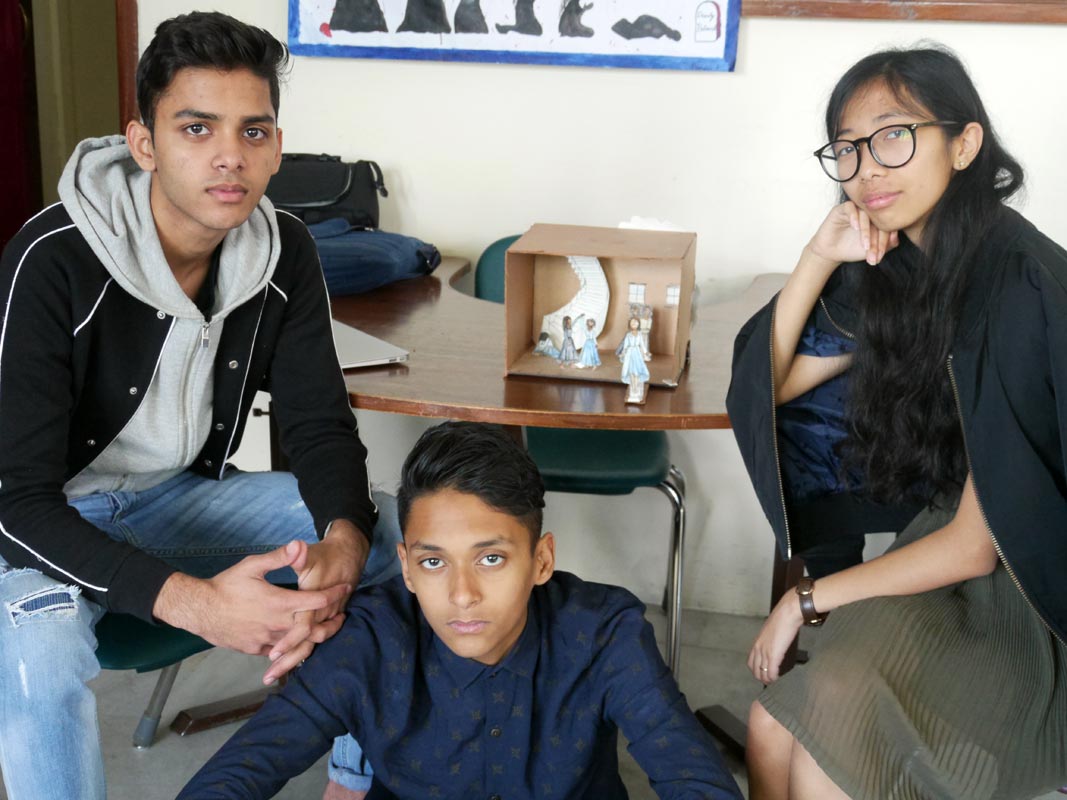
Harsh, Subhajyoti and Deborah
“For our final product we constructed a diorama of 124 (one of the houses featured in the novel), with a ramp extended out and Denver on the ramp. The ramp extending outwards represents Denver stepping out of 124 and into the real world. Inside the actual box will be a younger version of Denver, alone and isolated, then Denver happy in the company of Beloved, Beloved and Sethe happy together and then Beloved’s evil side revealed and Sethe in distress, in the form of small drawings. In the back is Denver’s emerald closet and a drawing of her outside it, to symbolise that she has escaped the state of isolation, with her ears covered but an open mind, hinting towards a chance of self improvement and the chance to gain greater knowledge.”
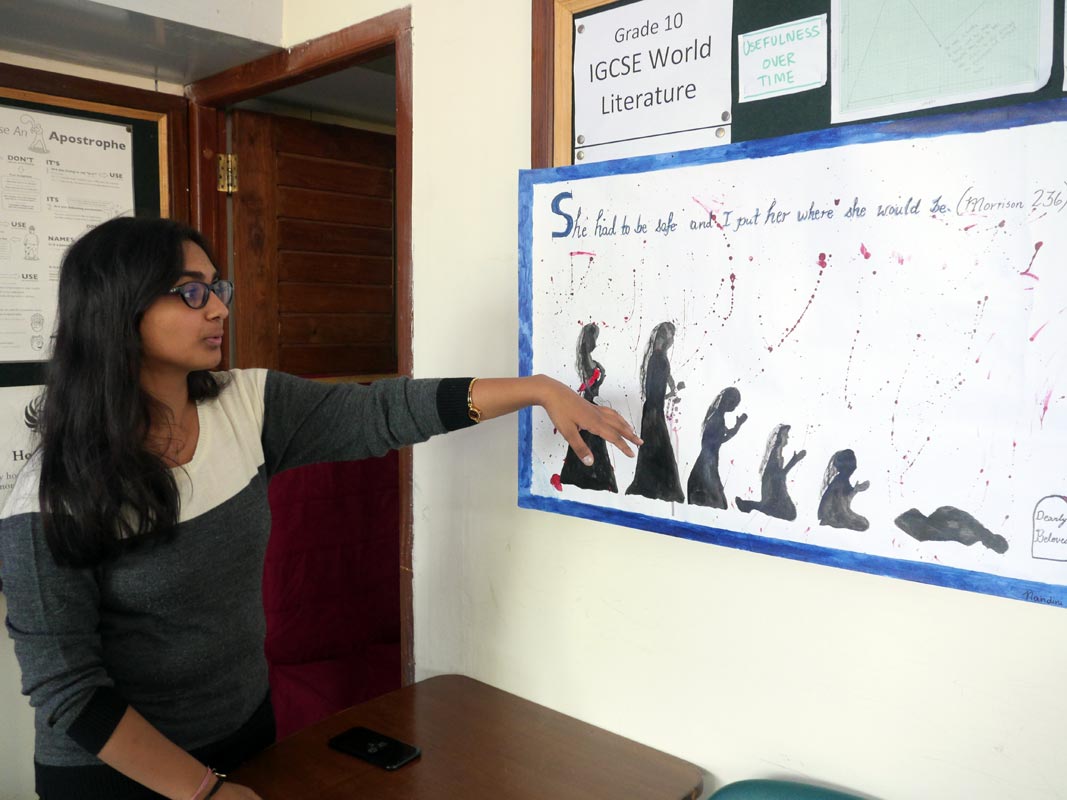
Nandini
Nandini’s picture shows the evolution of Sethe using the idea of ‘Human Devolution’. Sethe’s head is held high even after murdering her own daughter, but she shrinks and fades as if to demonstrate the effect on her over time.
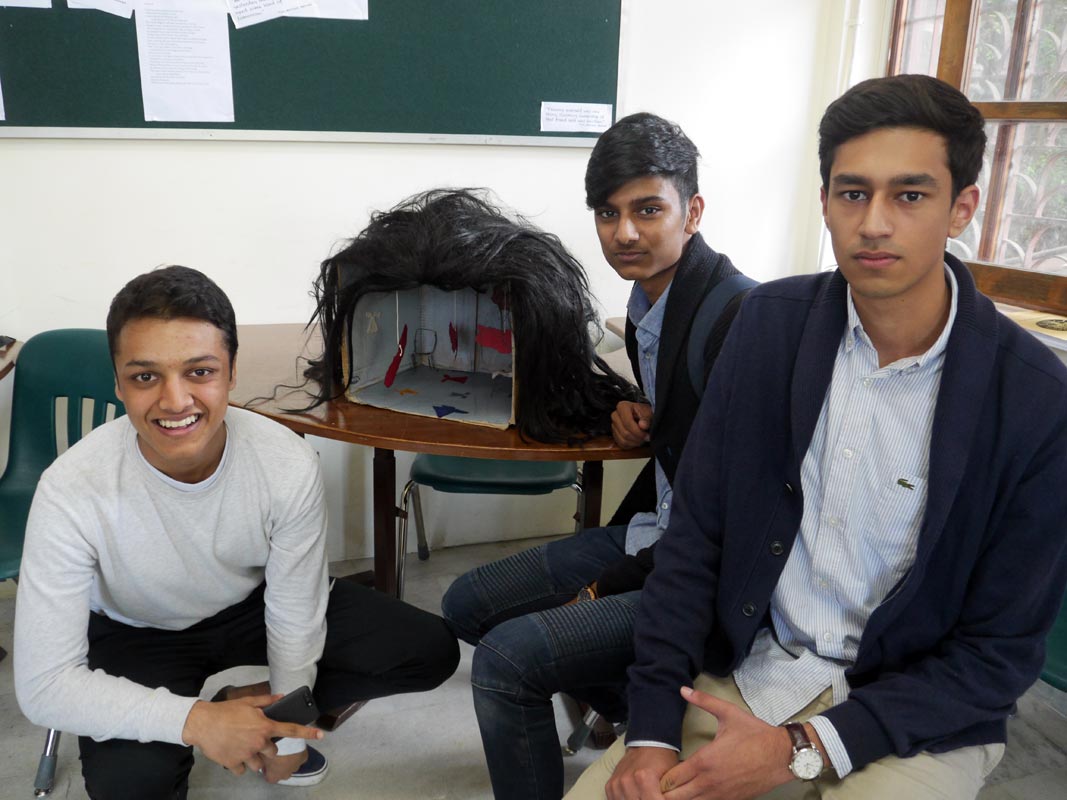
Udit, Arjan and Akul
“We made Sethe’s room, out of a cardboard box, which was described by Morrison when Paul D comes to 124 after Beloved had left. Her room’s details reflect Sethe’s thoughts at that time. We chose this format because it is a creative way to express Sethe’s thoughts and how they have developed. The room’s messiness expresses our analysis which mainly includes Sethe’s instability and how Beloved was the reason of her condition.”
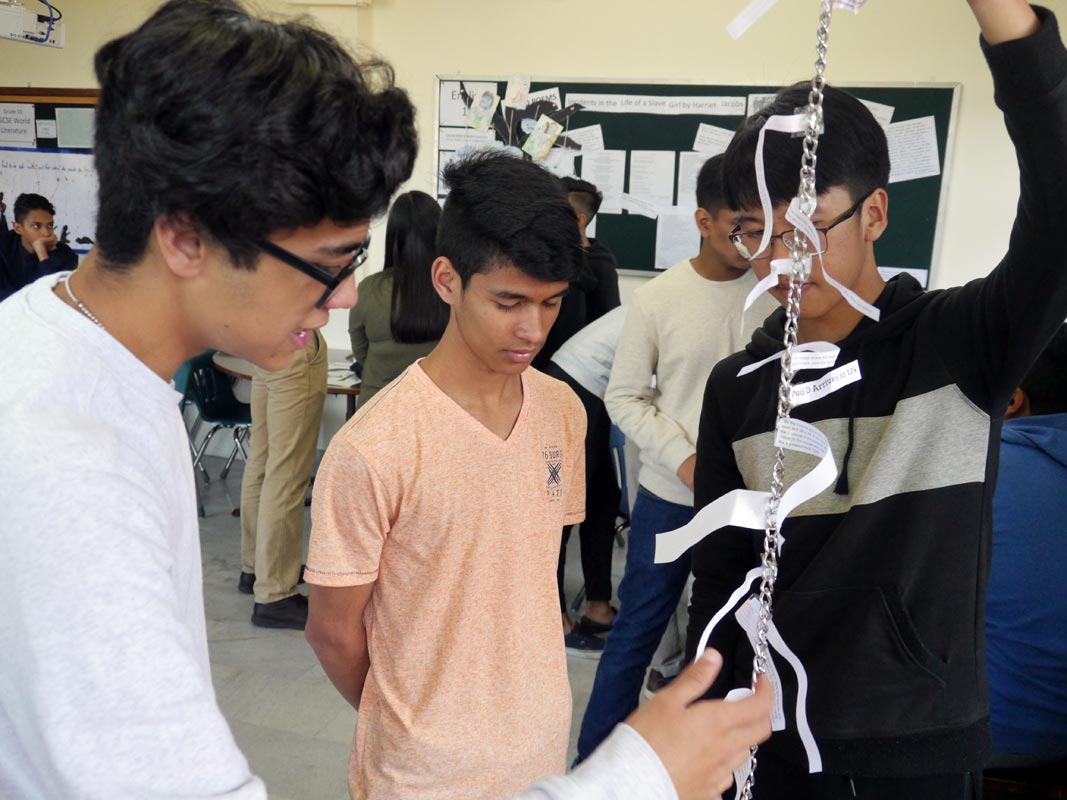
Meghan and Pema
“Paul D had had a rough past, in his chain-gang, and before, where he underwent a lot of… torture. He had closed all his emotions and feelings inside him, and was blunt to others, without caring much about empathy. When he found out that Sethe had killed Beloved, he could not handle the story, and called Sethe an animal. He could not empathize with Sethe because of his suppressed past. But as Beloved left, he could open his past, and all his trapped emotions, which allowed him to empathise with Sethe, and realize that the past didn’t really matter when all he wanted was a better life, with his people.”
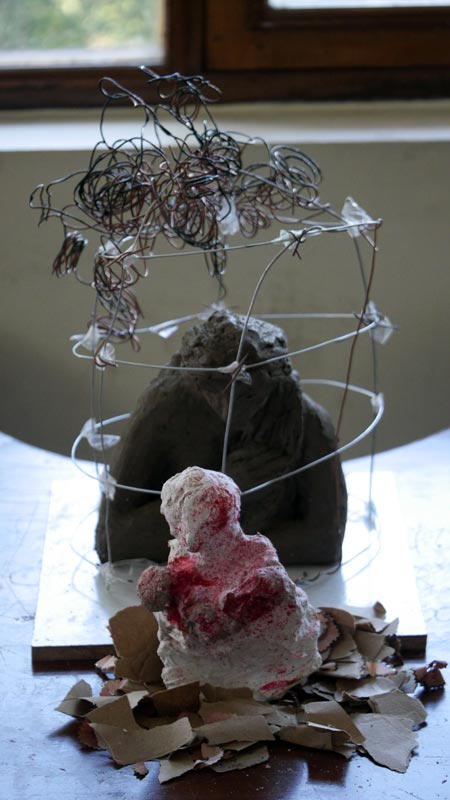
Vriti and Aditi
“Both of us are AP Studio Art students and work with clay, wires and plaster. The first piece is a clay sculpture of a hunched woman, covering her body with her hands and hair and has bumps on her back. Sethe, just like the sculpture, had a scar on her back… The tree made out of rusted wire, attached to the barbed wire, represents chokecherry tree. The second piece is a plaster sculpture of a woman holding two kids. The woman is Sethe and the two kids are Beloved and Denver. This sculpture represents the time when she was leaving her house after killing Beloved… The sculpture is kept on sawdust, signifying the day when she killed her own kid.”






No Comments